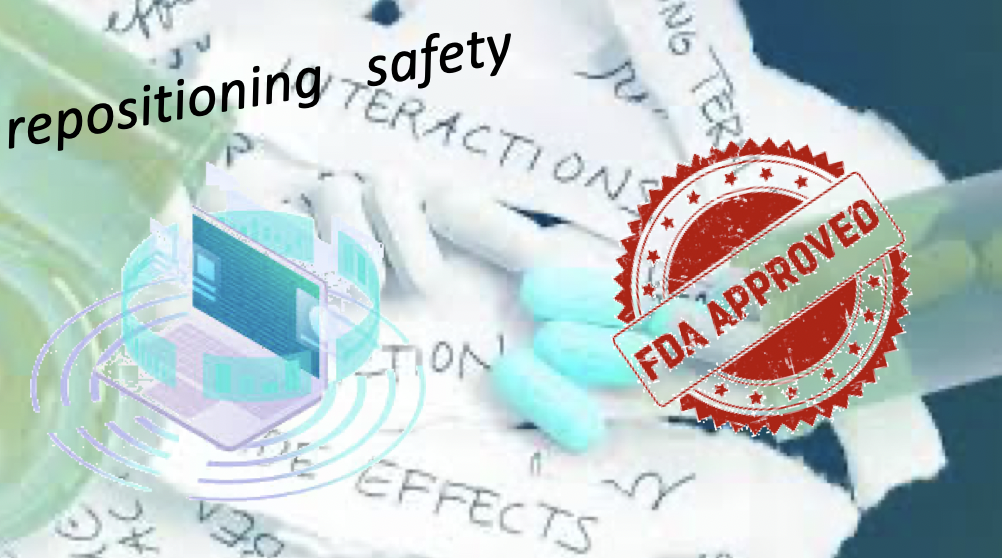
There is an urgent need for the healthcare industry to reposition safety: that is to change how the ability to discover, possess information about and act on predicted Adverse Drug Reactions (ADR) is perceived and treated by pharma companies, the regulator and other stakeholders.
To date drug testing has been biased toward minimizing “Type I” errors; that is minimizing the chance of approving drugs that are unsafe. Consequently the market has not been conducive to the early prediction of ADRs:
On the science front – and with some exceptions only – predictive algorithms and analytics are only just beginning to be introduced, with their predictive accuracy and “actionability” still being assessed.
On the corporate front, pharma companies have treated a predicted ADR as a liability, often with little use other than complying with the regulator and serving a usually ill-defined “fail early” wish.
And on the regulatory front, and as a partial consequence of the scientific challenges faced, the framework has been – and still remains – very much conservative.
ut a predicted ADR need not only be seen as a liability; information on a predicted ADR could generate rather than destroy value. For example, the ability to predict possible ADRs might help a company contemplating the in-licensing of a compound to better assess the benefit/risk profile of that compound. Or it could better inform the design of Clinical Trials (CTs), especially in the context of adaptive CTs.
The challenge on the regulatory front however is more formidable. Erring on the side of safety has been the chosen approach, given the state of our predictive science to date and our justified desire to protect human lives. But this conservative stance may be ripe for change. What is needed is a new framework that revisits the balance between the cost to pharma companies of not identifying an ADR early enough or of terminating a compound on the basis of a falsely predicted ADR versus the benefit/cost of taking action on a predicted ADR whether this turns out to be a true or a false positive (see Table 1).
Table 1: Benefit/Risk to pharma of acting or not on predicted ADRs
| Act on Predicted ADR that materialized | Do not act on Predicted ADR that materialized | Act on Predicted ADR that did not materialize | Do not act on Predicted ADR that did not materialize | |
|---|---|---|---|---|
| Benefit |
|
|
|
|
| Risk / Cost |
|
|
|
|
An “ADR-friendly” framework needs to provide a reasonable set of incentives and disincentives to pharma that are commensurate with the cost of a missed or falsely predicted ADR, so that companies are encouraged to assume the risk of predicting, sharing and acting on purported ADRs. Failure to provide such a framework will result in “more of the same” practices continuing to prevail for years to come, when the need to develop novel and safe treatments in shorter timescales has become very pressing, as the Covid-19 pandemic has made painfully obvious.
Table 2 below provides a first set of possible elements of such a new regulatory framework. For this framework to work, it is clear that the discussion must be open, must involve all stakeholders and recognize the difficulty of providing workable solutions as the underlying (predictive) technology is still being developed.
Table 2: Elements of an ADR-friendly regulatory framework
| Element of Framework | Description | Challenges |
|---|---|---|
| Offset financial loss from reduced target population size | Offer drug sponsors incentives (monetary or other) for a product whose benefit/risk profile is more complete and better suited to specific patient populations | The nature and scope of incentives might be hard to agree on given the predicted ADR might not materialize |
| Product differentiation claims on drug labels | Allow sponsors to make differentiation claims regarding their product and link these to reimbursement prices | Claims based on the absence of an ADR versus the presence of some benefit might be considered tenuous |
| Limit disincentives of disclosure | Ensure that the implications of a predicted ADR that is disclosed do not severely impair the development prospects of a compound – or others in its class (for ADRs that are not life threatening) | It might be difficult to agree on acceptable limits of extrapolation |
| Incentives for acting on a predicted ADR | Provide additional incentives – such as fast tracking or priority in patient recruitment – if information on a predicted ADR is acted upon, for example in the optimization of a clinical trial design. | The nature and scope of incentives might be hard to agree on given competing reasons for incentives (e.g. rare diseases) |
| Limit drug class spillover effects | Care should be taken not to overextend any implications to similar (same class) compounds. A commonly agreed definition of “critical similarity” would need to be in place and further refined over time in view of new evidence. | It may be challenging to agree on a definition of “critical similarity”. |
| Consider “undue burden” on pharma | Requiring pharma to take action on a predicted ADR translates to real R&D costs that could become significant in the case of repeated false predictions. There should be provisions to correct/mitigate against such “undue burden”. For example, post marketing studies could impact the “predictive accuracy score” of any predictive algorithm (or other tool) used and this taken into account in all future predictions of that tool (e.g. by applying some “accuracy coefficient”) . Such an evidence-based approach has the additional advantages of (a) making use of powerful AI/ML technologies and (b) allowing the industry to have a workable solution while more accurate predictive algorithms are being developed. | Assuming the availability of multiple predictive technologies, incumbents will need to agree on how to treat different predictions from different tools |
| Fair competition and marketing practices | Negative advertisements that exploit a predicted ADR should be banned. | The basis of the restriction, namely that it is predicated on an ADR that may not materialize, might be challenged in view of existing negative advertising practices |
| IPR implications | Consider possible negative IPR implications from a disclosed ADR on potential patent claims regarding related indications and/or target patient populations | It might be challenging to align the concept of an ADR with the requirement for novelty, utility and non-obviousness. |
| International ADR Treaty | An international treaty under which signatories share the basic elements of an ADR-friendly regulatory framework | Failure to sign by some countries might create exploitable loopholes |
ADRs have long been a major pain point for the more efficient running of healthcare systems. It is time we change the regulatory framework such that the benefit/risk equation of predicting , disclosing and acting on purported ADRs provides a fair and internationally acceptable mix of incentives and disincentives that will encourage pharma companies and other stakeholders to adopt and further develop ADR prediction as a value creating rather than a value destroying decision support tool.

